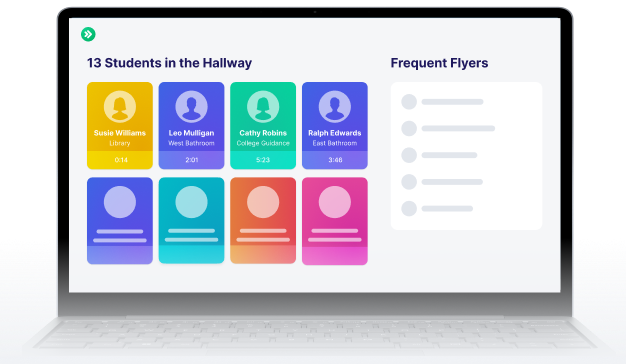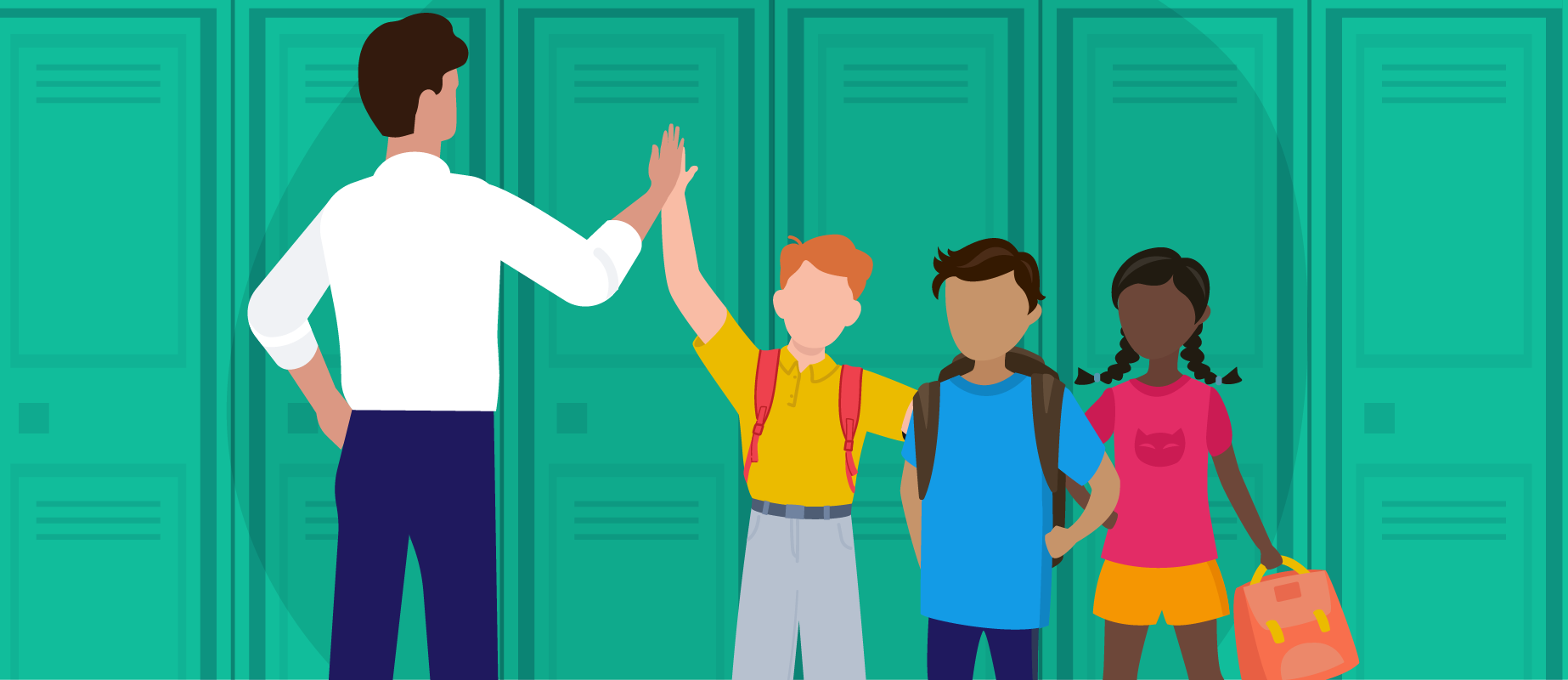In the News: Enhancing Safety in Schools Across Minnesota
Read the Story
SmartPass Co-Founders Listed on Forbes 30 Under 30
Read the Story

Lee Moskowitz
.avif)

Bullying in schools and managing student conflict is an important safety issue that can take a lot of shapes. These issues impact students by interrupting their education, harming their mental and (sometimes) physical health, and pulling them away from the school community. It also creates a wider impact of damaging a school’s ability to foster a positive school environment. It can bring disruption and even fear or disengagement if students and families begin to feel like it’s a consistent issue or that they may be on their own if they were to face a similar situation in the future.
Student conflict can take many shapes and not all conflict is bullying. The needs and possible responses vary in each case and a holistic, effective, and personal plan is always the goal! In more severe cases, students may end up in a no-contact agreement. It’s an important support measure that can protect students, but it can be tricky for schools to handle. So, how can schools promote conflict resolution and ensure student safety through no-contact agreements?
While this article will go into more detail about what no-contact agreements are and how schools can use them to support their students, the legal requirements and ramifications vary in each jurisdiction and situation. This is for informational purposes only and should not be considered legal advice.
A common no-contact order or no-contact agreement definition is an order that requires one person to not contact or interact with another, including using third parties to contact the other person. Mutual agreements are a version that requires both individuals not contact each other. No-contact order and no-contact agreement are sometimes used interchangeably, but in most cases, they’re slightly different. A no-contact agreement is agreed to by the students, while a no-contact order is implemented and enforced by the school administration through due process and is not based on student agreement.
These no-contact agreements apply in all school settings, which requires some coordination and planning. They’re necessary for a variety of reasons, such as bullying, harassment, and abuse, but generally, conflict is involved. They can be used during an investigation phase to prevent further issues or to solve other interpersonal problems when other responses haven’t been effective. There may also be negative group behaviors that warrant them.
Negative impacts to educational outcomes, physical safety, or mental health are all factors in determining when a no-contact agreement may be needed. It can mean that students are kept separated in group settings, are moved to other classes or areas, or are prevented from being near each other in transition times. Friend groups may be involved in the agreement, if a social dynamic has been a factor and multiple students were part of the conflict.
A sense of safety is central to a good learning environment. It gives students the space to focus on their lessons and prevents disruptions to learning. If students, families, and school staff and teachers are concerned about a lack of safety, it will stay top of mind and have a negative impact on students and the school community. That’s why schools work so hard to ensure safety wherever possible.
Physical safety measures are typically clear-cut in their need and implementation. Safety measures that are focused on behavior and social interactions are also necessary but can be more difficult to outline and implement. These can include:
The last bullet point is where the importance of no-contact agreements is found. No-contact agreements and orders and other school policies that prevent bullying in schools and other harmful situations are tools that can bring a higher sense of security to vulnerable students and keep them safe.
As important as they are in promoting student safety, it can be difficult to enforce policies like no-contact agreements. Organized times like lunch periods and class schedules are more manageable, but what happens during the transition moments or outside of the classroom? Students report that twice as much bullying happens in those transitional moments. A student determined to break a no-contact order may look for opportunities then.
There are lots of reasons that students may break policies and rules, but the practicality of teachers enforcing them is a big one. If students have to leave two separate classrooms, teachers wouldn’t be able to know or prevent a crossover. It’s not easy to monitor and teachers don’t usually have the time or resources to communicate with each other on the spot.
There may be legal and privacy reasons that prevent communication in the hearing of students, as well. Additionally, students have a right to movement and their need for access to places like the restroom and other daily activities. So while communication and monitoring could make a big difference, they have to be done intentionally.
SmartPass’s encounter prevention technology is a tool that can help manage student interactions and combat the challenges in enforcing no-contact orders. School staff can create groups of students that need to be prevented from encountering each other outside of the classroom. There are several use cases for this, including building supports around a no-contact agreement.
It’s simple to set up, fully flexible, and has no limit to the size or configuration of the groups. All staff needs to do is:
Once a group has been designated, if one student in the group is currently out on a hall pass and a second student attempts to create one, SmartPass will pop up a generic message that tells them “Sorry, you can't start your pass right now.” This allows students to maintain a no-contact agreement without drawing attention to it. It’s automatic so that teachers can keep teaching, and it doesn’t cause a disruption for the students or their classmates. Students aren’t shown who they are prevented from encountering.
Of course, teachers can always disable a group if a special situation requires it. The impact for students and schools is seen in the log it keeps of prevented encounters. Plus, this feature can be paired with SmartPass’s detected encounter technology. As Sylvania schools saw in their results with SmartPass, this combination can be particularly effective as it combines the information needed to assess regular or problematic encounters and the means to enforce prevention in the future.
Managing student conflicts and preventing bullying is a key role of school staff and teachers. Build a positive and supportive foundation with clear behavior expectations, good relationship rapport, consistent and positive communication, community engagement, and intentional safety policies. Getting student buy-in and offering positive reinforcement is essential.
When behavioral issues and student conflicts do happen, be ready with a process and enforce it fairly and consistently. Have teachers and staff trained in de-escalation techniques like active listening, modeling calm, ignoring challenging questions from a student, or validating student feelings. Make sure that there is also a plan and system for communication between teachers and other school staff.
School policies are there to foster a positive education environment and support students in their learning and safety. For many policies, that support is backed up by a legal responsibility for the school to protect students and treat them fairly while respecting their rights and privacy. When those policies include a no-contact agreement, legal considerations may also include court orders or criminal investigations.
It is vital that schools take a look at their current systems and processes to assess where they can more effectively and efficiently meet those obligations. Use information to find areas that need improvement, consider the benefits of using technology to manage student interactions and conflicts, and brainstorm solutions that can be customized to student situations. The suggestions and information in this article are not specific legal advice. School staff and leadership can work with their district’s legal team to consider their options and how best to move forward.
Drafting a holistic and supportive plan to intervene in a student conflict is a big job, and when it includes no-contact agreements, it can be a lot to navigate. They are key tools in creating a safer environment for students who may be experiencing conflict, harassment, or bullying. They also can prevent other negative group behaviors that a school may be facing.
While thoughtful planning and coordination can manage most of the scheduled moments and allow teachers and school staff to enforce the no-contact orders, it can be more challenging outside the classroom. This is especially true in hallways, bathrooms, or other unsupervised or unplanned moments. Communication and clear information are key but can be at odds with teachers’ many other responsibilities and students' needs and privacy. Tools like SmartPass and its encounter prevention technology can be a key difference in making that possible. Get in touch to learn more!
A reminder that this content is for educational purposes only and SmartPass always encourages further research or consultation with legal professionals in your jurisdiction, as needed!

.jpg)

